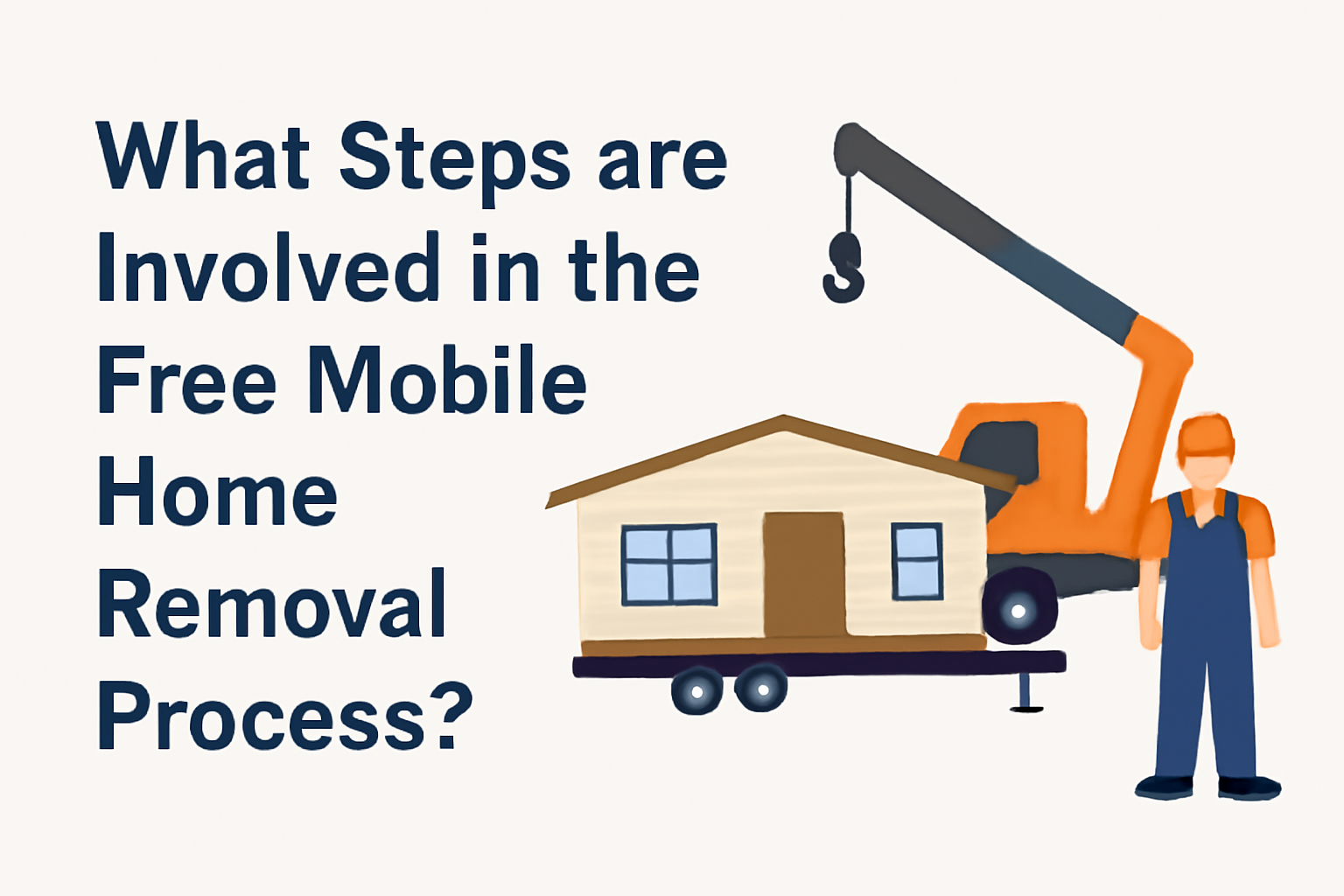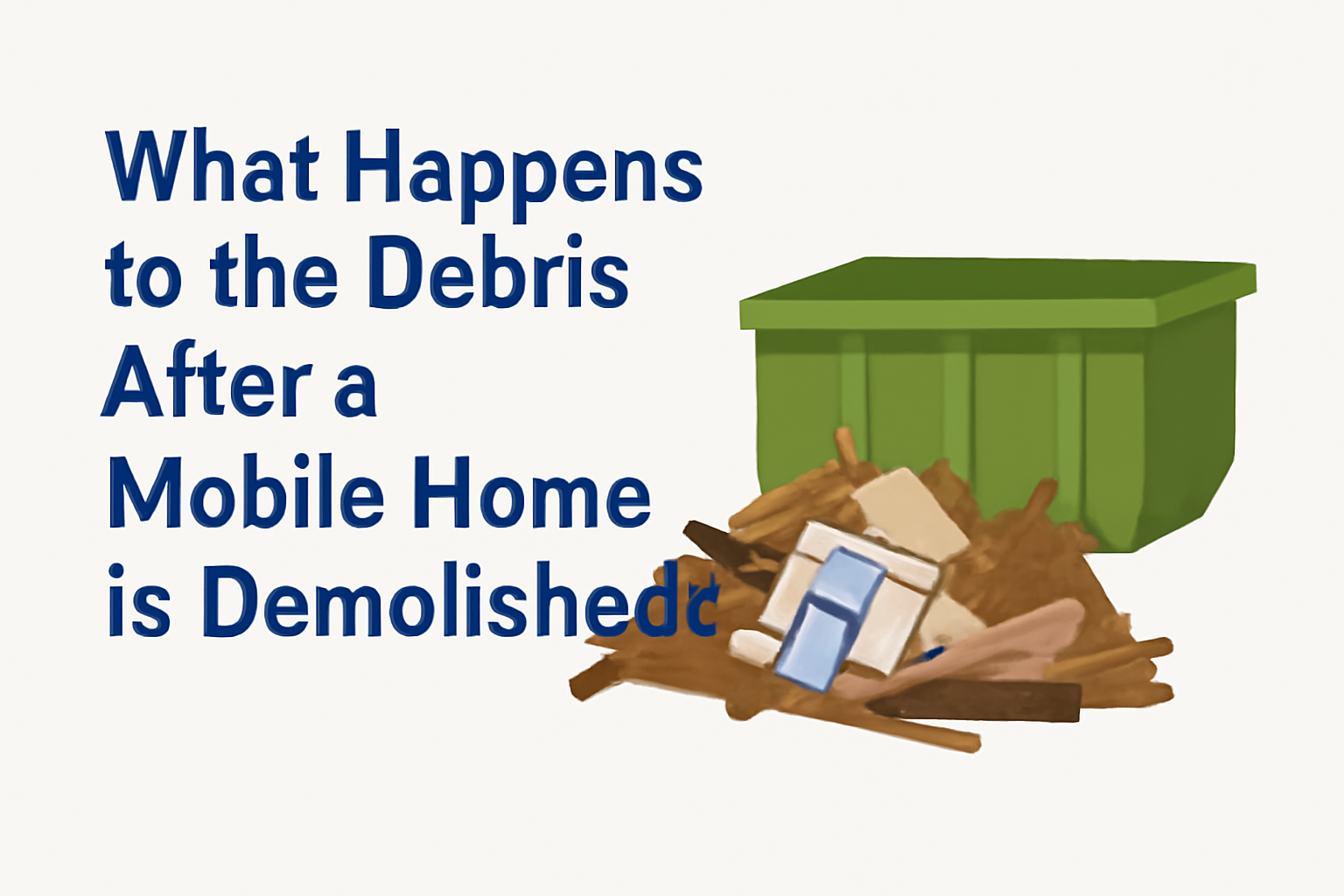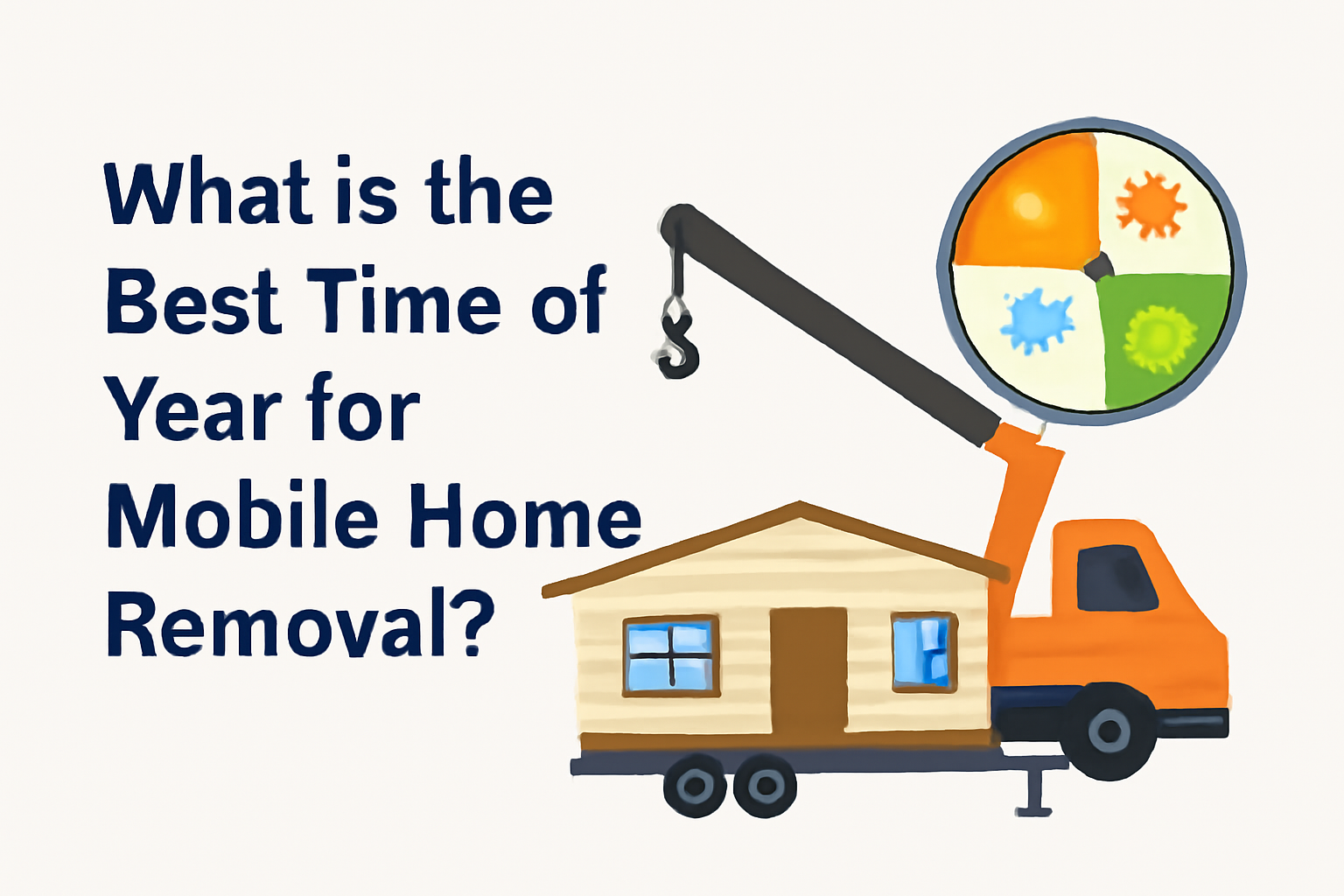Learning how do we prepare for a mobile home removal requires meticulous preparation. You need to fulfill legal compliance along with efficient execution.
Knowing the necessary procedures can help the process go more smoothly and effectively, whether moving, selling, or destroying a portable home.
Recognize the Type of Removal
Decide what kind of removal is required before moving on. Three primary choices are available:
Relocation
The mobile home may be moved to a different area if it is still in excellent shape.
Demolition
Demolition is better for older or severely damaged portable properties.
Deconstruction
Deconstruction entails removing the existing building and preserving any precious elements.
Read: Do mobile homes depreciate?
Preparing for Mobile Home Demolition
Preparing for mobile home demolition is beyond tearing the architectural structure down. Conduct a site inspection because it will locate:
- Hazardous materials
- Insulation that needs expert’s attention
Coordinate with demolition experts. Plan debris sorting and removal with them. Always verify environmental and safety regulations for it will prevent contamination or regulatory violations.
Read: How long do mobile homes last?
Mobile Home Removal Checklist
Draft a detailed mobile home removal checklist before the beginning of this project so do not overlook anything. Add the tasks, such as:
- Confirming permit approvals
- Hiring licensed contractors
- Scheduling utility disconnections
- Arranging waste disposal
Do not forget to list recycling or salvage plans for reusable materials. A clear checklist minimizes delays. It also ensures full legal compliance.
How Do We Prepare for a Mobile Home Removal?
Knowing how do we prepare for a mobile home removal helps you make appropriate plans. It also enables you to manage your finances beforehand.
Permits and Approvals
Permits are often needed to remove mobile houses due to local and state regulations. Consult the building or zoning agency in your area to learn:
- Requirements for demolition, transfer, or removal permits.
- Rules governing the removal of dangerous substances, including
- Electrical components
- Asbestos
- Lead paint
- Rules for the community regarding whether the mobile home is on private land or in a park.
- Fines or legal issues may arise if the required permissions are not obtained.
Hire Skilled Moving Services
Portable property removal is not a DIY project. Employing experts guarantees both safety and adherence to rules. Think about:
- Movers with a license to transport.
- Professionals in demolition for structural demolition.
- Recycling businesses for salvageable resources.
You can also select the most dependable and economical choice by investigating and contrasting various mobile home removal service providers in your area.
Get the best search results for ‘free mobile home removal near me’ in Texas, US!
Cut-Off Services and Utilities
All utilities must be correctly disconnected before the removal procedure starts to avoid risks. Speak with service providers to disconnect:
- Utilities
- Plumbing and sewage pipes
- Internet
- Cable
- Any other services
To prevent safety hazards, be sure that only qualified specialists execute all disconnections.
Remove Personal Belongings and Fixtures
Empty your movable property. Remove every single thing, such as:
- Furniture
- Personal belonging
- Detachable fixtures
In addition, consider the elimination of:
- Reusable cabinets, windows, and doors.
- Recyclable or resalable HVAC systems and appliances.
Awnings and decks are examples of outdoor buildings that might hinder removal. Doing so lessens the home’s weight and guards against valuables being damaged.
Prepare the Removal Site
Sufficient room and access are necessary for the removal procedure. Get the site ready by:
- Removing obstructions like cars, trees, and fences.
- Ensuring that equipment and transport vehicles can be accessed by road.
- Verifying the state of the ground to prevent problems with unstable terrain.
- When the site is prepared in a right manner, it decreases delays in removal and safety risks.
Environmental Impact and Disposal
When working on any project that risks the environment, be mindful that it will be your responsibility. Therefore, minimize the influence on the environment by:
- Recycle things, such as glass, metal, and wood.
- Using approved disposal sites to get rid of hazards.
- Giving reusable parts to thrift or charity.
Sustainable methods may result in cheaper disposal costs and less trash going to landfills.
Final Inspection and Cleanup
Ensure the area is clear of dirt and tidy once the mobile house has been removed by doing a final check. Talk about any:
- Removal of any remaining foundational components.
- Leftover substances that should be discarded properly.
- Land rehabilitation requirements, such as reseeding or grading.
In addition to ensuring adherence to local laws, this phase prepares the land for future usage.
Read: How to remove popcorn ceiling in double wide mobile home?
Summarized Mobile Home Removal Preparation Steps
- Assess the structural condition of your movable property.
- Identify salvageable parts.
- Secure temporary storage for valuable items.
- Clear access paths for heavy machinery.
- Inform regional authorities and neighbors about scheduled removal dates.
The Bottom Line
Comprehending how do we prepare for a mobile home removal demands careful preparation. Stick to the regional laws. Certify a seamless and effective procedure. Use the appropriate strategy to save money and time while removing a mobile home through any suitable option.
Call Texas Mobile Home Removal now!


